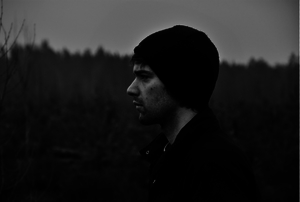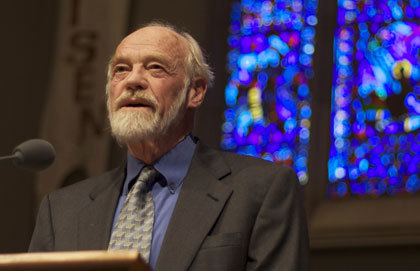In 1985, the same year the Titanic was discovered, Steve Jobs quit Apple, and Nintendo unveiled their first game console, Margaret Atwood released what would not just become her most successful novel, but one of the more haunting dystopias of the 20th twentieth century: The Handmaid’s Tale.
Atwood’s book follows Offred, a woman whose name literally means “of Fred.” If it sounds possessive, that’s because the story takes place in the Republic of Gilead, a fledgling, post-American nation where women are stripped of the right to hold property, use bank accounts or even read without permission. Making matters worse, an epidemic of sterility leaves most of the population unable to bear children, turning any fertile woman into a valuable commodity.
The key word here is ‘commodity’ : if a family counts itself among Gilead’s wealthiest and most influential, they can request the services of a surrogate. These women, called ‘handmaids,’ are given new names (Offred, Ofglen, Ofwarren) and are compelled by law to sleep with the head of the household and bear children for his family.
While parts of the narrative ring of actual historical events, like Iran’s infamous 1979 Revolution, most readers shelved Gilead alongside our other improbable futures. 1985, it must be said, was a very different year from our own.
Fast track to 2017: a large number of outlets are tripping over themselves to offer analysis of what the Tale means in an era of Trump. Every age reinterprets the classics for its own time, and many today are declaring Atwood’s visceral depiction of government-mandated misogyny and bigotry to be a chilling reflection of modern trends (a quick Google search will bring up articles in Rolling Stone, The New Yorker and even the author’s own piece in The New York Times). Most of the attention, though, focuses on how the Republic of Gilead proves to be a monstrous incarnation of Christian fanaticism, making it easy for readers to equate violent fundamentalism with conservatism and turn The Handmaid’s Tale into another volley in an already convoluted culture war.
This kind of discourse doesn’t just present a one-sided narrative of interpreting the Tale, it also papers over the nuances Atwood carefully layers into her society. Yes, representatives of the regime use the Beatitudes to cow women into rape, but the authorities consider Catholic priests just as subversive as gay men (a population referred to by the government as ‘gender traitors’). Yes, the show taps into unhelpful, potentially offensive elements of the zeitgeist (all the sympathetic protagonists are urban academics and creatives), but it is a lesbian handmaid who, on seeing the demolition of a cathedral, blurts “they...erased it,” furiously, connecting the act with how their identities are likewise erased.
The reduction of women to “walking wombs” echoes pro-choice discourse but, every time a baby is born, there’s no mistaking the value of life. In the novel, Atwood portrays the Baptists and Quakers as members of the resistance. Whoever tries to make The Handmaid’s Tale out to be anti-Christian might not be doing all their homework.






